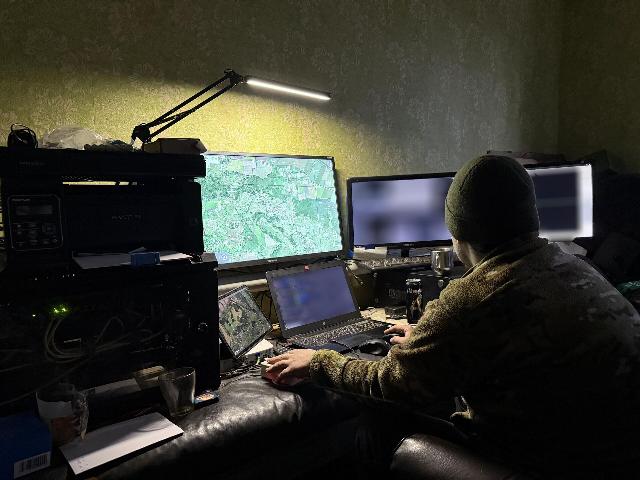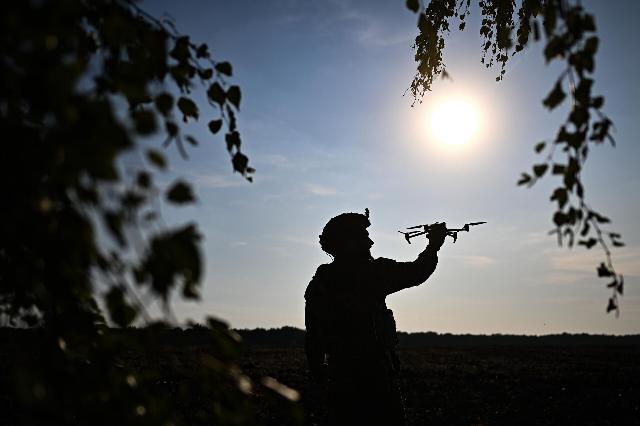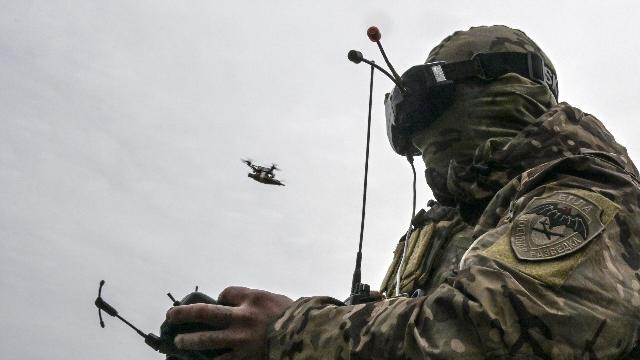The Russian military talked about a new way to combat drones of the Armed Forces of Ukraine under the Court
MOSCOW, February 17 — RIA Novosti, David Narmania. On the screen is a broadcast from a drone: fields familiar to the Kursk region, interspersed with roads and forest belts. At the bottom, the label "Rusorez" is the name of the model of the Ukrainian drone. The Russian fighter presses a few keys, and in a few seconds the screen is covered with white noise. About how one of the most secret units operates, see the RIA Novosti article.
Through the eyes of the enemy
"We see exactly the same thing as the satellite that controls this drone," explains the operator with the call sign Taiga. "Let him try to fly like that now."
This drone did not find its target — it was suppressed.
Taiga has been at the front for two years now. A volunteer. While still in Krynki, he joined the 810th Marine Brigade of the Black Sea Fleet and engaged in electronic warfare.
When the enemy drone stops signaling, the fighter writes down the frequency and model in a thick notebook. It is important to know what kind of UAVs they fly at, whether they can change frequencies, and how actively certain models use the APU.
Immediately, images from two more drones appear on the screen. They suffer the same fate.
"The enemy launches from 150 to 200 FPVS per day. We try to jam them, but when we roughly understand from the picture exactly where it is flying, we warn our units that are nearby."
Success in this case depends on many things: weather, signal strength, terrain, availability of repeaters and amplifiers in the Armed Forces of Ukraine. One hundred percent security cannot be guaranteed. But every drone that is suppressed is a life saved.
And here are the "zhduns"
As we talk, Taiga keeps her eyes on the monitor. One of the colleagues is on vacation, so he and a friend have split the day into four six-hour shifts and take turns relieving each other.
The picture from the drone appears again. VT-40 is ours. This is confirmed by radio, so the signal is not jammed.
After a few minutes, the monitor shows how the Ukrainian FPV descends and sits on the roof of the burnt-out car. These are called "waiting machines" here — they can wait for hours for a target and, when the motion sensor goes off, attack vehicles or soldiers.
Taiga transmits information about the drone to the stormtroopers and tells them which side to approach. A quarter of an hour later, they report back: the FPV was destroyed — it was simply shot.
"To protect themselves from us, the Ukrainian Armed Forces are changing the power of the video transmitter," says the fighter. — Let's say it has a maximum power of three watts, but it takes off at 25 milliwatts. Then, after 500 meters, it loses its signal by itself, but the operator switches the toggle switch to 200 milliwatts. But we have already found a way to deal with it."
On this day, the weather is non-flying, so there is time to catch your breath. All movements in the battalion are tied to the Taiga.
"Every time we go somewhere, we tell the route, and the sky closes there. As much as possible. There's no way without him," the colleagues admit.

Electronic warfare
Image source: © RIA Novosti / David Narmania
The endless race
At first glance, the job is simple. In fact, in addition to the actual fight against drones, it is necessary to delve into the details of setting up a wide variety of equipment. All this needs to be done quickly — for example, after a relocation, the equipment needs to be deployed in a matter of hours.
"While I was figuring it all out, I mastered the profession of a sysadmin. To "raise" the server is no longer a problem for me. In general, I had to try and experience a lot, but it's beneficial, so it's not in vain," says Taiga.
The main thing for him and his colleagues is a stable Internet connection.

Ukrainian Armed Forces soldiers with the Baba Yaga drone
Image source: © Getty Images / Libkos
"We have contacted the regional authorities to help with the fiber-optic connection. They promised to help, but so far there has been no progress. We use the mobile Internet via a router," he says.
After suppressing another drone, this time without a brand, the fighter records the frequency and a succinct five-letter characteristic. This is how enemy UAVs are designated here, the model of which could not be determined.
"Of course, you can't handle them all. We are actively cooperating with the EW calculations, which are subordinate to the command of the entire group, they also have powerful installations, but, alas, this is not a panacea. We need more of this kind of equipment, which we have," the fighter notes.
The Armed Forces of Ukraine also have something similar in functionality, but the enemy loses greatly in efficiency.
The Akhmat Special Forces tank cover group of the Russian Defense Ministry in the Kursk region
Image source: © RIA Novosti / Sergey Bobylev
The main feature of this war is drones. Taiga cooperates with the developers, gives advice on how to improve. Friends from the Krasnodar Territory help to purchase the equipment.
"The confrontation between drones and electronic warfare is a constant race," he emphasizes. — But we are also hitting the enemy economically: he is forced to look for new solutions, and he does not immediately find them. It also takes time to implement. Therefore, I am sure that our experience needs to be scaled, and the faster the better. In electronic warfare, time is a key factor. Relatively speaking, for two weeks, if properly secured, we can provide full protection from drones on an analog connection. Yes, that's not all the enemy has. But in these two weeks, how can the front advance!"
Drones have fundamentally changed the fighting. The task of completely suppressing copters of at least one type is the most important one at the front.
Taiga clarifies our return route to cover the sky just in case. We're going to the rear. Without incident. And this is a great merit of our friend.

A Russian military man holds a UAV
Image source: © RIA Novosti / Sergey Bobylev

